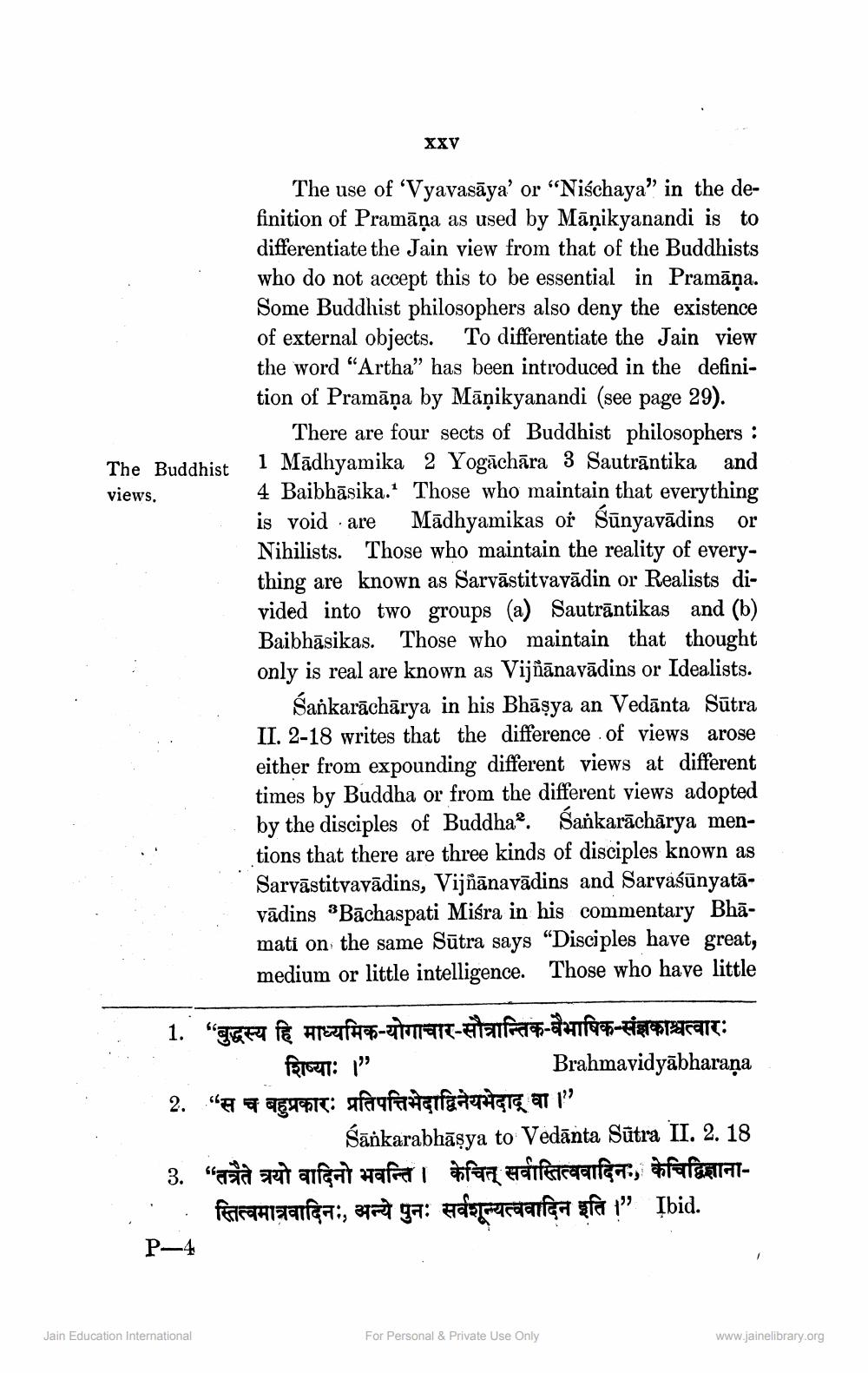________________
XXV
The Buddhist views.
The use of ‘Vyavasāya' or “Nischaya” in the definition of Pramāņa as used by Māņikyanandi is to differentiate the Jain view from that of the Buddhists who do not accept this to be essential in Pramāņa. Some Buddhist philosophers also deny the existence of external objects. To differentiate the Jain view the word “Artha” has been introduced in the definition of Pramāņa by Māņikyanandi (see page 29).
There are four sects of Buddhist philosophers : i Mādhyamika 2 Yogāchāra 3 Sautrāntika and 4 Baibhāsika. Those who maintain that everything is void are Mādhyamikas or Sūnyavādins or Nihilists. Those who maintain the reality of everything are known as Sarvāstitvavādin or Realists divided into two groups (a) Sautrāntikas and (b) Baibhāsikas. Those who maintain that thought only is real are known as Vijñānavādins or Idealists.
Sankarāchārya in his Bhāsya an Vedānta Sūtra II. 2-18 writes that the difference . of views arose either from expounding different views at different times by Buddha or from the different views adopted by the disciples of Buddha?. Sankarāchārya mentions that there are three kinds of disciples known as Sarvāstityavādins, Vijñānavādins and Saryaśūnyatāvādins 3Bāchaspati Miśra in his commentary Bhāmati on the same Sūtra says “Disciples have great, medium or little intelligence. Those who have little
1. "GET RE AT2f9-Mar-tante-
af974-ig talt: POTSU: 1"
Brahmavidyābharaṇa 2. "T ag : af afrigtigäter at 1
Śānkarabhāşya to Vedānta Sūtra II. 2. 18 ___ 3. "तत्रैते त्रयो वादिनो भवन्ति । केचित् सर्वास्तित्ववादिनः, केचिद्विज्ञाना:: Ferrani afgai, apie ga: Hariança eft ?"bid.
P-4
Jain Education International
For Personal & Private Use Only
www.jainelibrary.org




